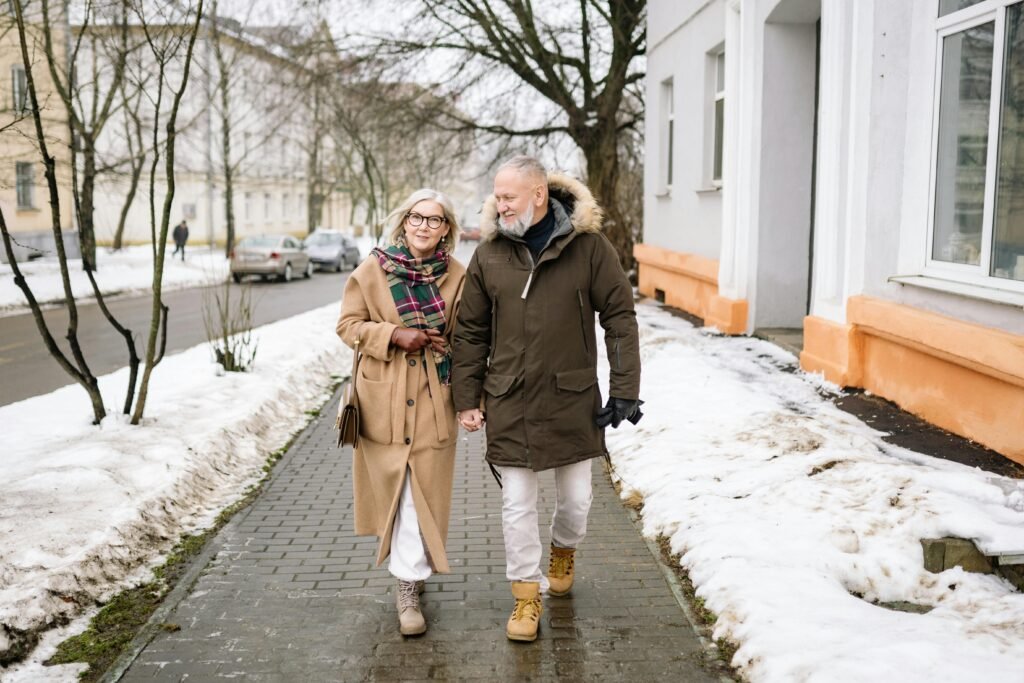Introduction to Yoga for Seniors
Yoga is a time-honored practice that promotes well-being for individuals of all ages. For seniors, yoga may offer transformative benefits that cater to changing bodies and minds. This gentle yet effective form of exercise allows older adults to maintain physical health while creating mental calmness.
Many believe that yoga is only for the young and physically fit. This misconception can prevent seniors from experiencing its advantages. Yoga can be easily adapted to suit individual needs, making it accessible for everyone.
The focus on breathing and mindfulness in yoga fosters a strong mind-body connection. This practice can help seniors find balance and peace, allowing them to navigate the challenges of aging with grace. Whether you’re new to yoga or returning after a break, it’s never too late to explore the benefits of yoga for seniors.
Understanding the Physical Changes of Aging
Aging brings numerous physical changes that can affect mobility and overall health. Many seniors experience decreased flexibility, strength, and balance as a part of this natural process. These changes can lead to discomfort and a decline in quality of life.
Joint pain and stiffness are common issues. As cartilage wears down, seniors may feel less comfortable participating in physical activities. Additionally, muscle mass tends to decrease, impacting strength and endurance.
Balance becomes crucial, particularly as the risk of falls increases with age. Fear of falling can discourage seniors from staying active, creating a cycle of decline. Understanding these changes is vital for adopting effective strategies to combat them.
Yoga offers an alternative that addresses these challenges. By focusing on gentle stretches and mindful movements, seniors can enhance their physical capabilities while maintaining a healthy lifestyle.
Key Benefits of Yoga for Seniors
The benefits of yoga for seniors extend far beyond physical fitness. One significant advantage is improved flexibility. Many yoga poses gently stretch muscles and joints, making them more pliable and reducing stiffness.
Yoga also enhances strength, which is essential in preventing injuries. Many poses involve holding one’s body weight, helping seniors build muscle without intense workouts.
Mental health benefits are equally important. Yoga incorporates mindfulness practices that can reduce anxiety and promote relaxation. Seniors who practice yoga often report feeling more centered and content.
Furthermore, regular yoga sessions can improve balance and coordination. This is especially crucial for seniors to help reduce the risk of falls and injuries. With its multifaceted benefits, yoga serves as a holistic approach to healthy aging.
Enhancing Flexibility with Yoga
Flexibility is a key aspect of overall health, particularly as we age. Many seniors find their bodies becoming tighter and less mobile over time. Fortunately, yoga offers numerous gentle stretches specifically designed to enhance flexibility.
Each yoga pose targets different muscle groups, encouraging lengthening and relaxation. Regular practice allows seniors to steadily increase their range of motion, making daily activities easier and more enjoyable.
Gentle stretches can also alleviate muscle tension, which is common as we age. This added relief can lead to heightened comfort and reduced pain. Many seniors report that through yoga, they’re able to perform tasks that once felt challenging.
Incorporating yoga into a regular routine fosters resilience, helping seniors stay active and engaged in their daily lives. The journey toward increased flexibility becomes a pathway to better health and well-being.
Improving Balance and Stability
As we age, maintaining balance becomes crucial. Yoga offers a variety of poses that enhance stability. These poses strengthen the muscles, improve coordination, and boost proprioception—understanding the body’s position in space.
Practicing yoga regularly helps seniors develop better control over their movements. Simple poses like Tree Pose and Warrior II engage core strength and promote better balance. These exercises can significantly reduce the risk of falls, a common concern among older adults.
Moreover, yoga focuses on controlled breathing, which enhances concentration during practice. This mindfulness aspect helps seniors become more aware of their body alignment, further contributing to improved stability. Even seated or chair yoga can provide numerous benefits in balance without the risk of falling.
Incorporating yoga into a daily routine can greatly enhance overall stability and confidence in movement, fostering independence and security in the senior years.
Boosting Mental Health and Wellbeing
The benefits of yoga for seniors extend beyond physical health. Practicing yoga significantly improves mental health and emotional wellbeing. The gentle movements and stretching help release tension while promoting relaxation.
Meditative aspects of yoga allow seniors to cultivate mindfulness. This mindfulness reduces anxiety and stress, providing mental clarity. By focusing on the present moment, individuals can let go of worries and improve their emotional resilience.
Research shows that regular yoga practice can even alleviate symptoms of depression. The holistic approach of yoga supports mental well-being, making it an effective tool for emotional health in older adults. Moreover, a supportive community often forms in yoga classes, further enhancing social connections.
These relationships combat feelings of loneliness, promoting happiness and positivity in daily life.
Promoting Heart Health through Yoga
Cardiovascular health becomes increasingly vital as we age. The benefits of yoga for seniors include promoting a healthy heart. Regular practice helps lower blood pressure and reduces cholesterol levels, leading to overall better heart function.
Gentle stretching and deep breathing exercises enhance circulation, supporting healthy blood flow. Yoga also encourages relaxation, which can reduce stress-related heart issues. Poses like Cat-Cow and Downward Dog open up the chest and help improve lung capacity, further optimizing heart health.
Practicing yoga can also lead to healthier lifestyle choices, such as improved diet and increased physical activity. Over time, these changes benefit overall wellness. Whether it’s participating in a class or practicing at home, yoga can be integrated into a daily routine to enhance heart health.
By making yoga a regular part of life, seniors can actively contribute to their heart health and longevity.
Yoga Variations Suitable for Seniors
Yoga is adaptable, making it suitable for seniors of all fitness levels. Many poses can be modified for comfort and safety. Gentle variations can include using a chair for support or practicing on the floor with props.
Chair yoga is particularly beneficial. It allows seniors to participate fully without strain. Many traditional poses, such as Forward Bend or Seated Twist, can be performed while seated. These modifications maintain flexibility and strength without compromising safety.
Restorative yoga is another excellent option. This style focuses on relaxation and gentle movements, ideal for seniors needing a calming practice. It incorporates the use of cushions and blankets to support the body, allowing for deep relaxation.
Seniors should always consult a yoga instructor experienced in senior practices. With the right guidance, yoga can easily transform into a fun and fulfilling activity that enhances quality of life.
Safety Tips for Practicing Yoga
Practicing yoga can be immensely beneficial for seniors, but safety should always come first. Consider starting with a gentle class specifically designed for older adults. Look for instructors who have experience working with seniors.
Always listen to your body. If you feel pain or discomfort, stop the pose immediately. Use props like blocks and straps to support your movements and ease any strain. Having a sturdy yoga mat provides better grip and cushions your joints.
Stay hydrated before and after your practice. Choose a space that is well-lit and free from obstacles to reduce the risk of falls. It’s wise to consult your doctor before starting any new fitness program, especially if you have pre-existing health conditions.
Lastly, practice slowly and mindfully. Yoga is not about how well you perform a pose, but about how it feels to you.
How to Get Started with Yoga
Getting started with yoga can be an exciting journey. Begin by finding a local class tailored for seniors. Many community centers and gyms offer gentle yoga sessions that focus on balance, flexibility, and relaxation.
If attending a class isn’t feasible, consider online classes or instructional videos designed for seniors. Ensure the instructor emphasizes safety and modifications for various abilities.
Invest in some basic yoga gear, like a good-quality mat and comfortable clothing. It’s important to feel at ease while you practice. Start with simple poses like Cat-Cow and Child’s Pose.
Practice regularly, even if it’s just for a short time each day. Over time, you’ll notice improvements in your balance, strength, and overall well-being. Most importantly, enjoy the experience of connecting with your body and breath.
Conclusion: Embracing Yoga for a Healthier Life
Embracing yoga offers an array of benefits for seniors. It promotes flexibility, balance, and strength, which are essential as we age. Regular practice can also enhance mental clarity and reduce stress levels, leading to improved emotional health.
By prioritizing safety and starting at a comfortable pace, seniors can fully enjoy the advantages of yoga without overwhelming themselves. Whether in a class or practicing at home, find joy in the movements and mindfulness that yoga brings.
Cultivating a daily or weekly practice can lead to lasting change. As you explore different styles and techniques, stay open to the journey ahead. With consistency and care, yoga can become an integral part of a healthier, happier life.


